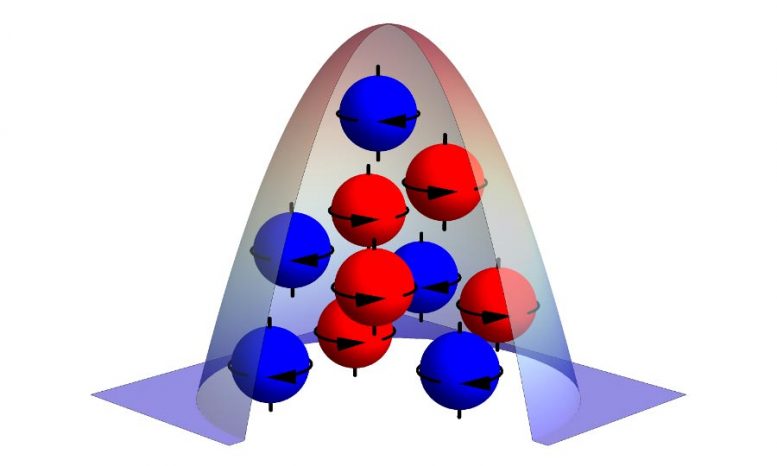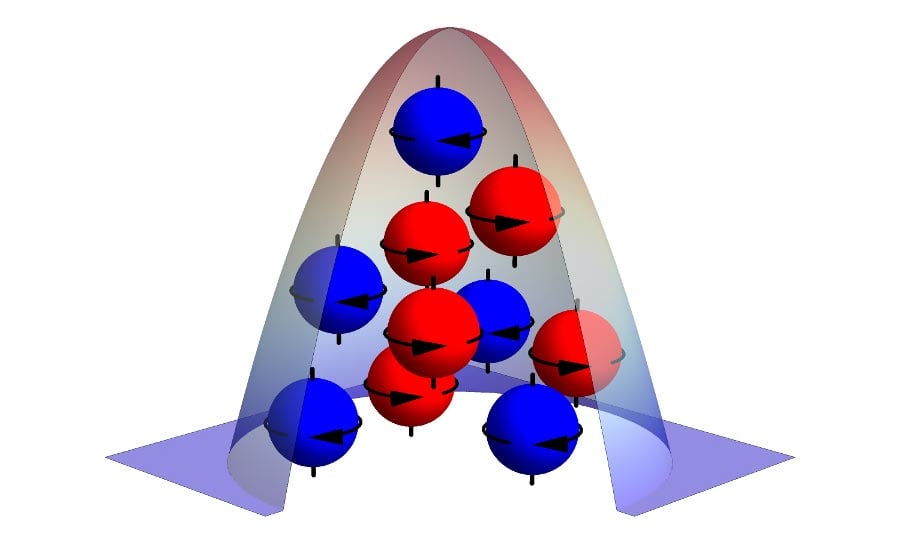
Scientists have been able to observe the universe and determine that about 80% of the its mass appears to be “dark matter,” which exerts a gravitational pull but does not interact with light, and thus can’t be seen with telescopes. Our current understanding of cosmology and nuclear physics suggests that dark matter could be made of axions, hypothetical particles with unusual symmetry properties.
In a new article published in Physical Review Letters and highlighted as an Editor’s suggestion, ICFO researchers Pau Gomez, Ferran Martin, Chiara Mazzinghi, Daniel Benedicto Orenes, and Silvana Palacios, led by ICREA Prof. at ICFO Morgan W. Mitchell, report on how to search for axions using the unique properties of Bose-Einstein condensates (BECs).
The axion, if it exists, would imply “exotic spin-dependent forces.” Magnetism, the best-known spin-dependent force, causes electrons to point their spins along the magnetic field, like a compass needle that points north. Magnetism is carried by virtual photons, whereas “exotic” spin-dependent forces would be carried by virtual axions (or axion-like particles). These forces would act on both electrons and nuclei, and would be produced not just by magnets, but also by ordinary matter. To know if axions do exist, a good way is to look and see if nuclei prefer to point toward other matter.
Several experiments are already searching for these forces, using “comagnetometers,” which are paired magnetic sensors in the same place. By comparing the two sensors’ signals, the effect of the ordinary magnetic field can be canceled out, leaving just the effect of the new force. So far, comagnetometers have only been able to look for spin-dependent forces that reach about a meter or more. To look for short-range spin-dependent forces, a smaller comagnetometer is needed.
Bose Einstein Condensates (BECs) are gases cooled nearly to absolute zero. Because BECs are superfluid, their constituent atoms are free to rotate for several seconds without any friction, making them exceptionally sensitive to both magnetic fields and new exotic forces. A BEC is also very small, about 10 micrometers in size. To make a BEC comagnetometer, however, requires solving a tricky problem: how to put two BEC magnetometers in the same small volume.


